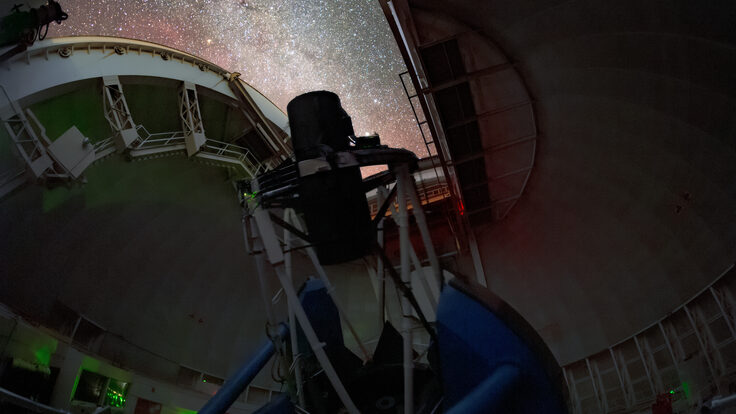Universal Accord
By Rachel Courtland
 |
| Images by: Fred Ullrich, Illustrations: Sandbox Studio |
Take one part unidentified goop. Add three parts mysterious energy. Throw in a dash of ordinary atoms. Mix. Compress. Explode. Let expand for 13.7 billion years.
It's an absurd recipe, but it's one that makes cosmologists drool. Ten years ago, no one could agree on what the universe is made of, how it is shaped, or what its ultimate fate will be. But less than five years later, long-awaited measurements and one stunning discovery forever transformed our picture of the universe.
The resulting model, often called the concordance model, holds that 22 percent of the universe is composed of dark matter, which pulls the universe together through gravity, and 74 percent dark energy, which pushes the universe apart. It is a cosmic recipe that unifies all astronomical observations to date, and though researchers do not yet understand what the ingredients are really made of, they know it tastes right.
“The concordance model is a real aesthetic achievement,” says Steven Kahn, an astronomer at the Kavli Institute for Particle Astrophysics and Cosmology at Stanford Linear Accelerator Center and Stanford University. “We have a really successful theory. It’s just amazing how well it works. That story hasn’t been told.” Part of the problem, he says, is that scientists don’t dwell on their successes. They’re always looking at the next big mystery.
In the mid-1990s, there were many mysteries in cosmology; the field had reached a crisis. Armed with mounting data on how galaxies clump together, astronomers plied the halls of their departments insisting that our universe is unexpectedly light, a bantamweight in the realm of possibilities.

“There were many discussions, many talks, many meetings at that very early time,” says Neta Bahcall, an astronomer at Princeton University, who worked on the mass measurements and was an advocate of the idea that the universe is light. Many cosmologists were reluctant to believe Bahcall and her colleagues.
The resistance to the idea of a low mass universe ran deep. The reigning picture of the big bang, the inflation model, called for a flat universe, with critical density of one: just enough energy and matter to keep it expanding forever without falling back in on itself. No one was delighted with the idea of abandoning inflation: it was the simplest explanation for how the universe became a stew instead of a purée, studded with stars and galaxies.
Theory strongly favored the idea of a flat, “just right” universe. But observational evidence weighed against it. Measurements of the universe’s large scale structure—the distribution of galaxies stretching back in time—suggested that the total amount of ordinary atoms and cold dark matter was only a third of what was required.
Even as the mass density closed in on its current value of 26 percent, some theorists continued to entertain the idea that there was a fundamental problem with the observations. “Theorists kept saying maybe the observers were not seeing the mass density because they were not looking far enough,” says astronomer Adam Riess of Johns Hopkins University. “It was always between galaxies or beyond, or just a little farther out.”
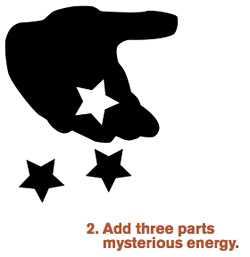
Others proposed wild ideas to account for the unexpected measurements. Perhaps there was some form of “hot” dark matter, moving at relativistic speeds, that could account for the missing 70 percent. Perhaps the universe is not spatially flat after all, and instead shaped like a four-dimensional saddle. Or perhaps it was time to resuscitate the idea of a cosmological constant, some mysterious energy in empty space with negative pressure, something that pushes out when pressed in.
In the end, the problem was solved by accident. In the early 1990s, two rival groups of astronomers began work on a different way to weigh the universe by using supernovae, stellar explosions that dot the distant, ancient sky. Both teams expected to confirm the results of the galaxy cluster measurements, showing a low-mass universe. They also expected to see evidence of a universe that is still expanding but slowing down. “We were expecting to find a small amount of deceleration,” says University of California, Berkeley, astronomer Alex Filippenko, who worked on the High-Z Supernova SearchTeam.
The supernova technique was still in its infancy when in late 1997, email bearing strange, new data zipped back and forth across a dozen time zones. The results were confounding. Supernova explosions in distant space were 25 percent dimmer than expected.
The researchers thought at first it might be dust or some minor glitch in a program. But as crosschecks were run and possible mistakes eliminated, both teams were left with one conclusion: the expansion of the universe is not slowing down—it is accelerating.
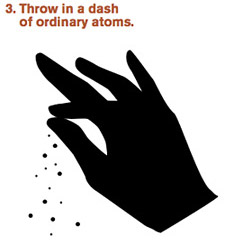
The implications were not immediately clear. “I’ve been describing it to people as the slowest eureka moment you’ll ever hear of,” says astronomer Saul Perlmutter, who led the Supernova Cosmology Project from Lawrence Berkeley National Laboratory.
The gravitational attraction between the matter in the universe was putting on the brakes, but something else, pushing against it, seemed to be hitting the accelerator.
“I expected the community to massacre us,” says astronomer Brian Schmidt, who led the High-Z team from the Mount Stromlo and Siding Spring Observatories in southeastern Australia. “It was a crazy result, and I expected they would tell us we were crazy.”
Part of Schmidt’s hesitation was that the simplest way to explain the findings was the cosmological constant. Einstein originally introduced the fudge factor to counteract the attractive force of gravity and make a static model of the universe, later retracting it when Edwin Hubble released his measurements of an expanding universe in 1929. He is said to have called the invention of a non-zero cosmological constant, or lambda, his greatest blunder.

“Lambda is kind of the last resort of scoundrels. It’s always been lurking in cosmology,” says theorist Michael Turner of the University of Chicago.
“It’s ugly,” says cosmologist James Peebles of Princeton University. “If you or I were making a universe, we wouldn’t put it in.”
Still the data seemed to call for it. On January 12, 1998, on the eve of his honeymoon, High-Z team member Adam Riess was still in feverish discussion over the supernova results, and what it would mean to have found a non-zero cosmological constant. “In your heart you know this is wrong, though your head tells you that you don’t care and you’re just reporting the observations,” Riess’ teammate Robert Kirschner wrote. Riess replied within the day. “The results are very surprising, shocking even,” he wrote. “The data require a nonzero cosmological constant! Approach these results not with your heart or head but with your eyes.”
Despite their fears, the idea of an accelerating universe was welcomed, and in record time. “It didn’t take long,” says Bahcall. “It was much quicker than it took people to believe in the existence of dark matter, which took decades.” Theorist Sean Carroll of the California Institute of Technology agrees, “Everyone was ready to believe something dramatic about the universe.” It was just the evidence cosmologists had been waiting for.
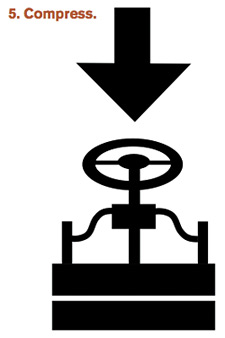
Some cosmologists were quick to accept the new results. “I like to call the discovery of cosmic speed-up the most anticipated surprise,” says Turner, often credited with coining the term ‘dark energy.’ “What a result. People believed it instantly and why? Because it was the missing puzzle piece. It made everything fit together.” With dark energy, the low mass universe became consistent with inflation.
Others were more hesitant to embrace acceleration, waiting for confirmation from other sources. They didn’t have long to wait. Within several years, even more solid measurements of supernovae and large-scale structure supported earlier observations of cosmic acceleration. Ground- and balloon-based studies of the universe’s oldest radiation, the cosmic microwave background, began to show hints that the universe might be flat. In 2003, the first data from the space-based Wilkinson Microwave Anisotropy Probe arrived and ushered in the era of precision cosmology. The WMAP results swept away all doubt, independently confirming the existence of dark energy and conclusively demonstrating that the universe is very close to flat.
After WMAP, many potential cosmological theories were ruled out and the evidence pointed strongly toward the lambda-CDM model—a flat universe with a non-zero cosmological constant and a serving of cold dark matter. Often called the concordance model for its unassailable collection of interlocking measurements, the lambda-CDM model has unified not only the picture of the universe, but also the contentious and divided community of researchers who study it.
“The status quo in cosmology is that everybody would disagree,” says Riess. Now that has changed.

“Every attempt to understand the universe on large scales now begins with this as the model,” says Carroll. “Whether or not you try to argue for some alternative, this is the place you start.”
But the model does have limitations. If there is a cosmological constant, quantum mechanics suggests it should be as much as 120 orders of magnitude greater than what has been observed.
What’s more, there is no reason to assume that dark energy, whatever it may be, is given by the cosmological constant. No one knows whether the concentration of dark energy in the universe is the same as what it was at the time of the big bang, or whether it is the same from place to place.
Nevertheless, the observational evidence for the model has only gotten stronger in the years since the supernova measurements were released. “There’s so much data that supports this theory, lambda-CDM, that it’s become the standard model of cosmology,” says Joel Primack, a theoretical physicist at the University of California, Santa Cruz. Primack is trying to turn the community on to his term for the dark energy-dark matter model. He thinks it should be called the double-dark model. “It makes you think of coffee or ice cream,” he says. So far he has few takers.
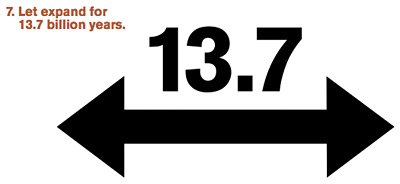
Concordance has also resolved a number of other problems that plagued cosmology in the mid-1990s, the most contentious being the age of the universe. Astronomers were making increasingly more precise measurements of the current expansion rate of the universe, but when they tried to use the value to calculate the age of the universe, they found a problem. Globular clusters, which orbit around galaxies including the Milky Way and contain the universe’s most ancient stars, appeared to be older than the universe itself. Some stars appeared to be over 12 billion years old. The new model resolves this problem, pinning the age of the universe at 13.7 billion years.
“It’s this wealth of crosschecks that really warms the cockles of one’s heart,” says Peebles. Even a few years ago, Peebles says, he was far more skeptical of the model.
With lambda-CDM as a starting point, astrophysicists are now poised to go after an even deeper mystery, namely understanding whether dark energy comes from a cosmological constant or is made of something even stranger. Proposals for ground-based projects like the Large Scale Synoptic Telescope and the Dark Energy Survey are under consideration. Space-based missions to probe the nature of dark energy are also being considered, including the Joint Dark Energy Mission, an element of NASA’s Beyond Einstein program.
What comes next is anyone’s guess. “It’s a real puzzle,” says Peebles, “and a real opportunity for the next generation.”
Click here to download the pdf version of this article.




